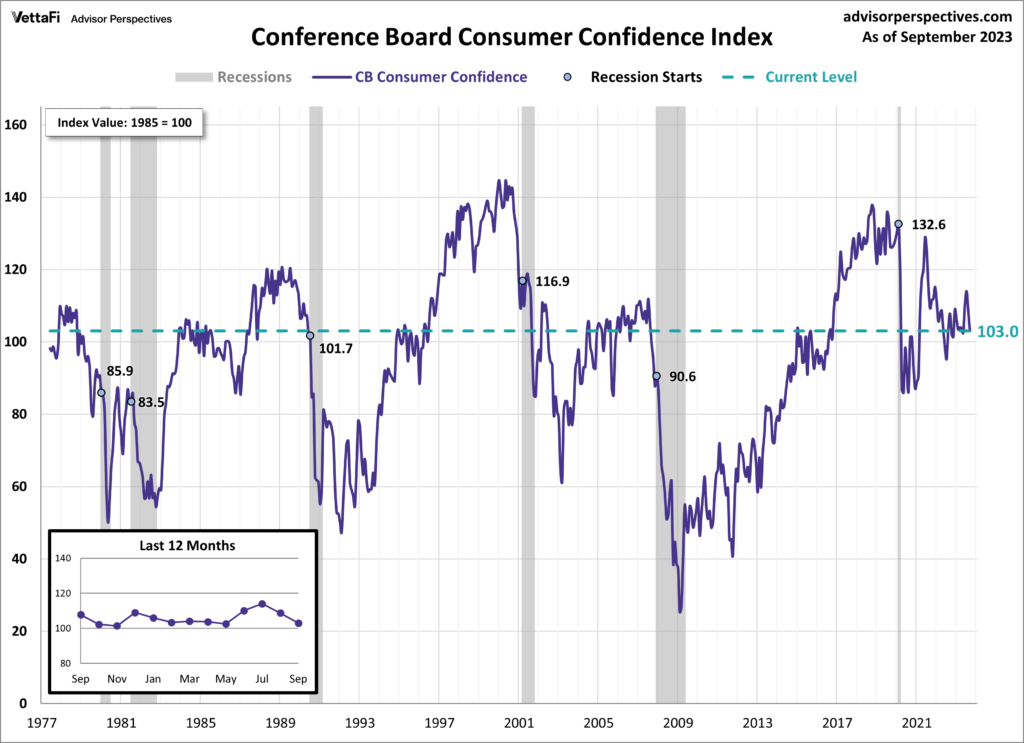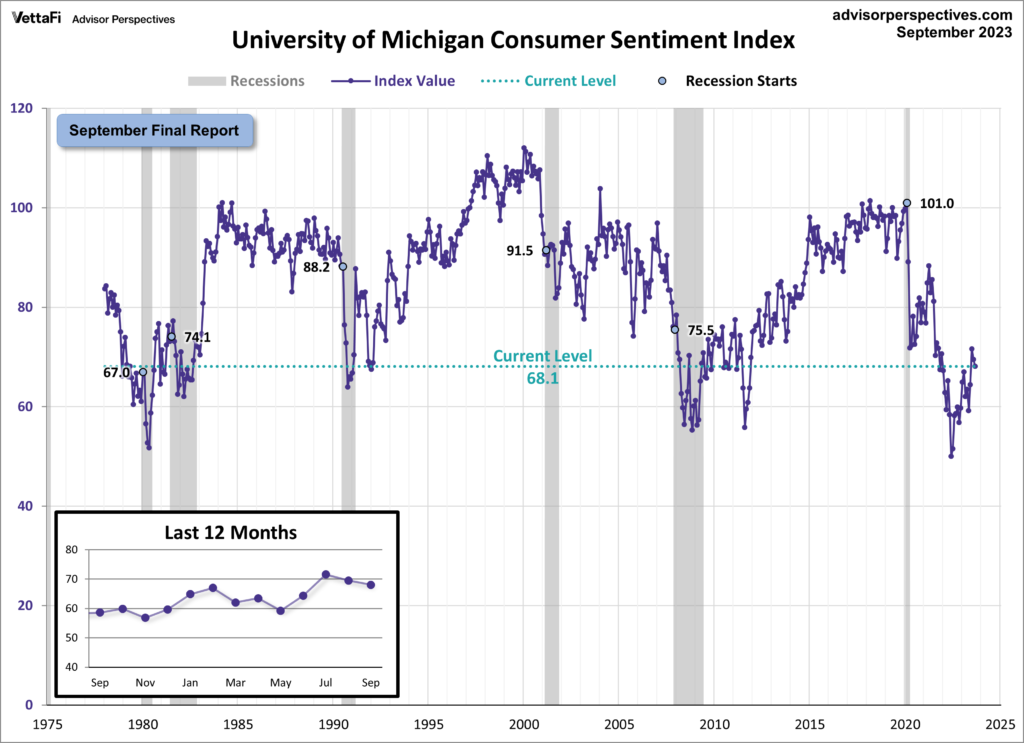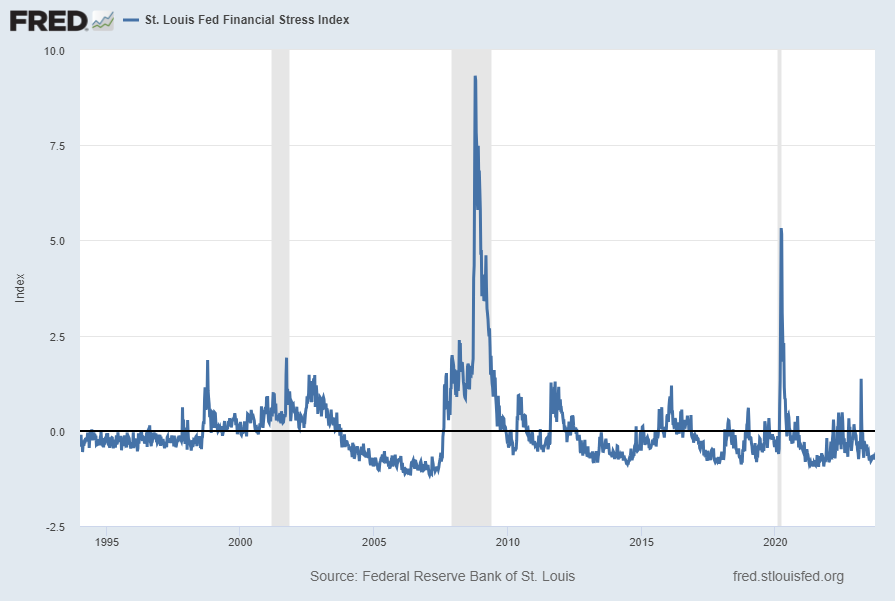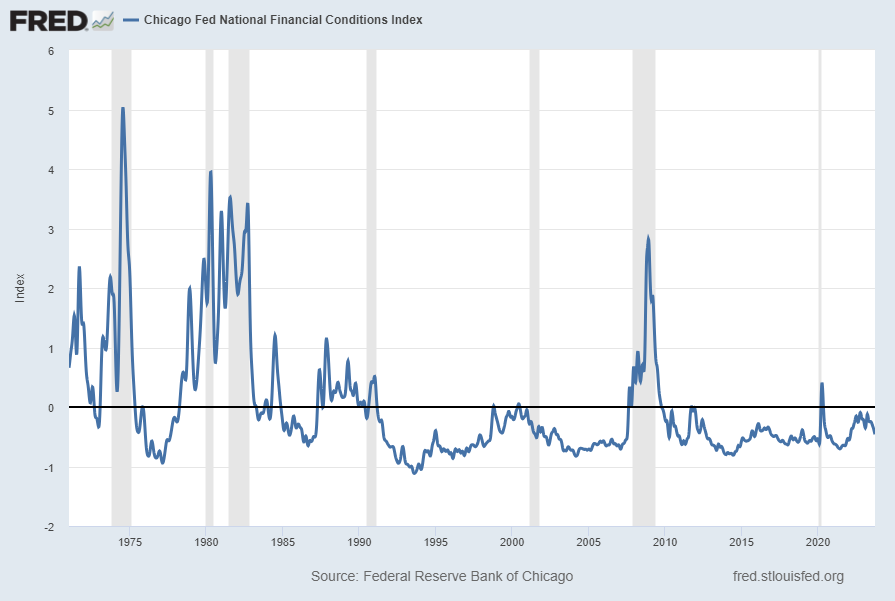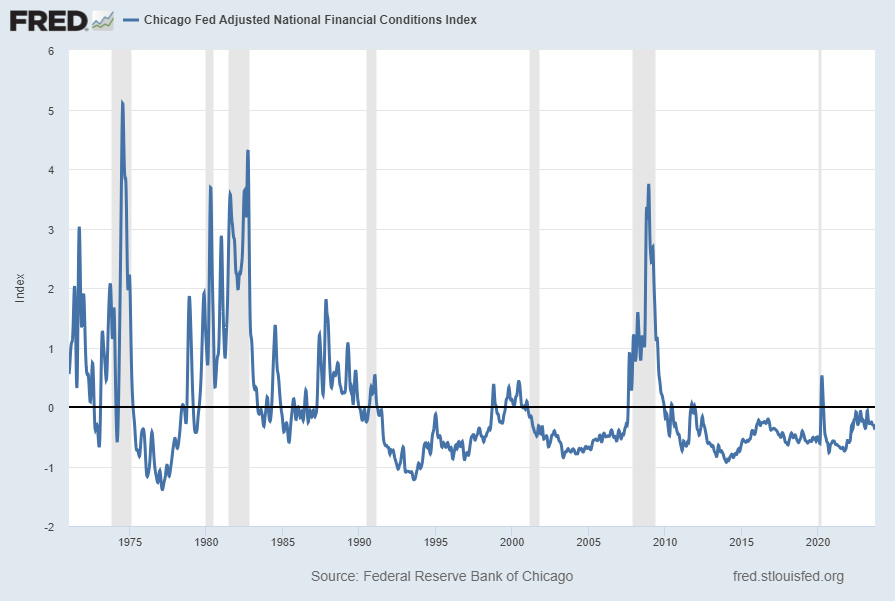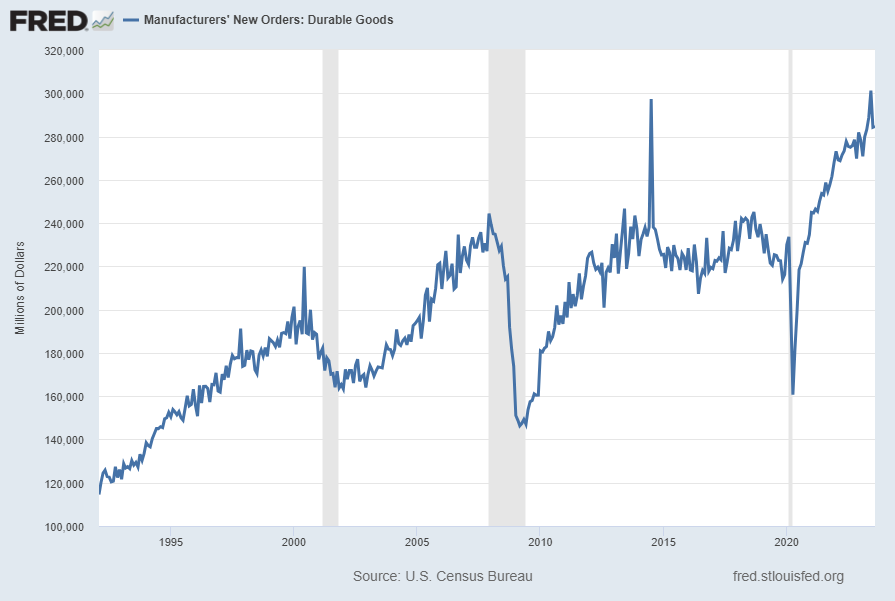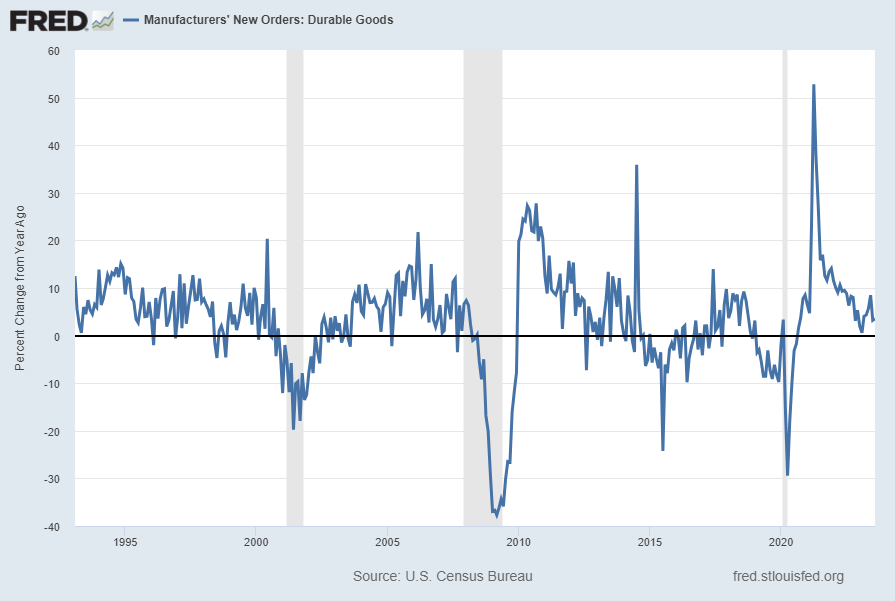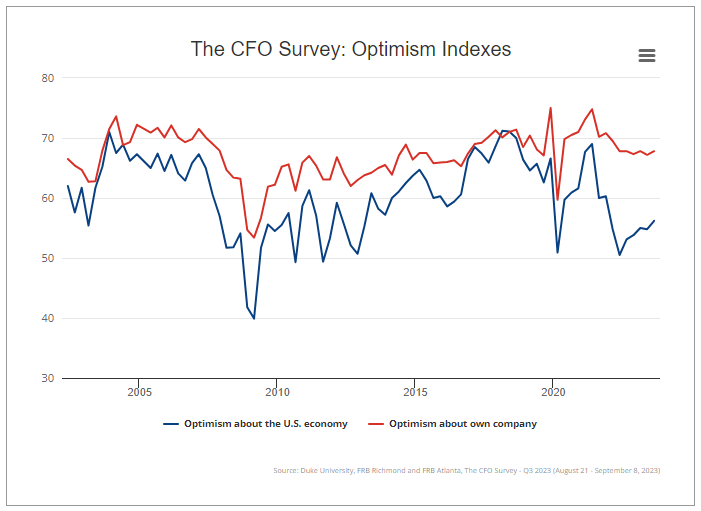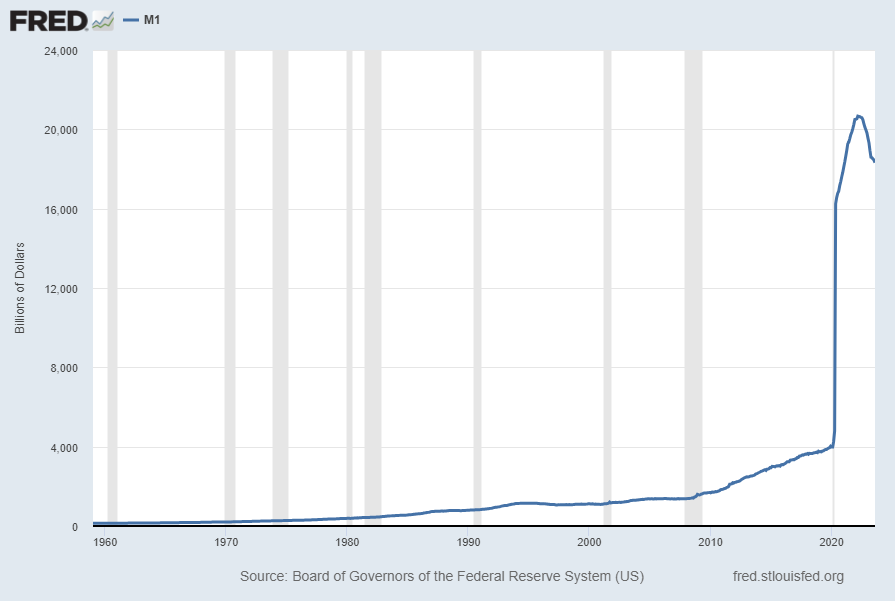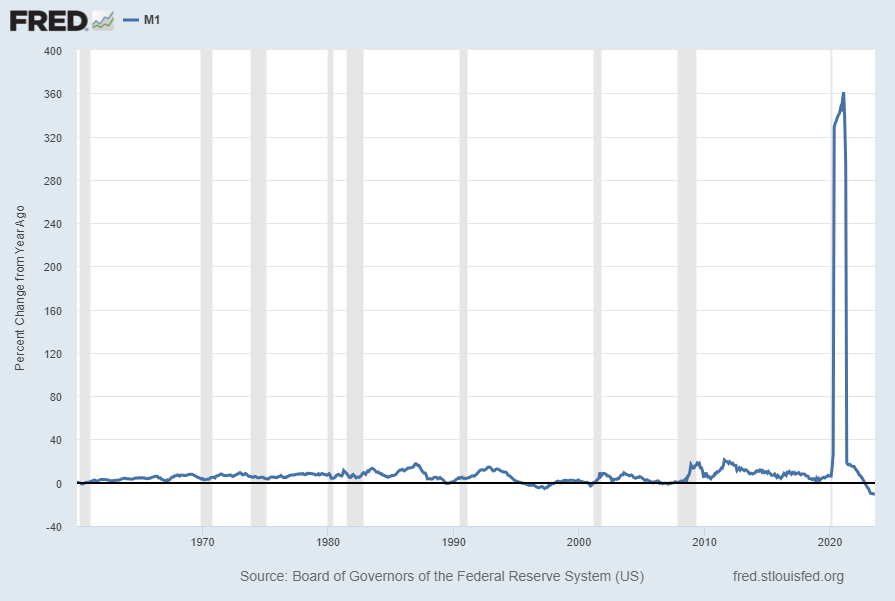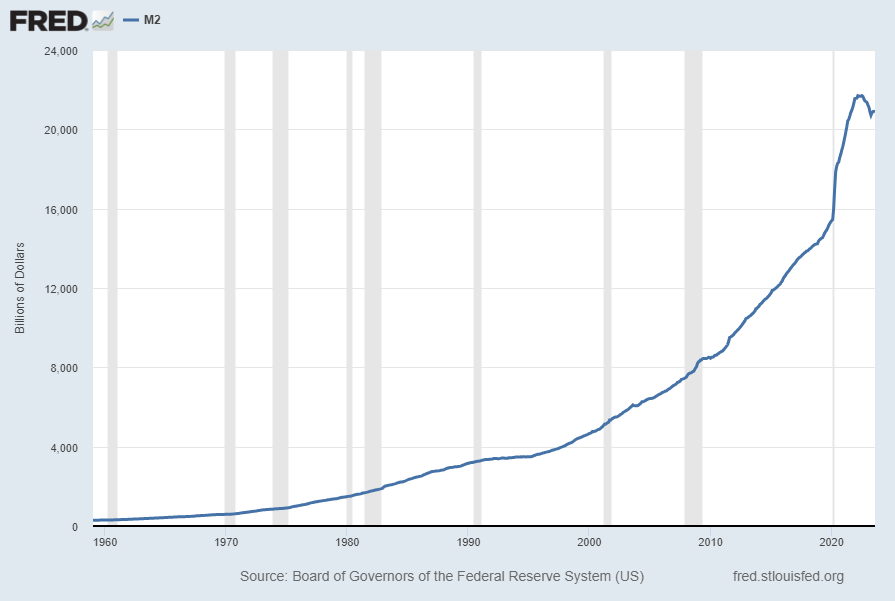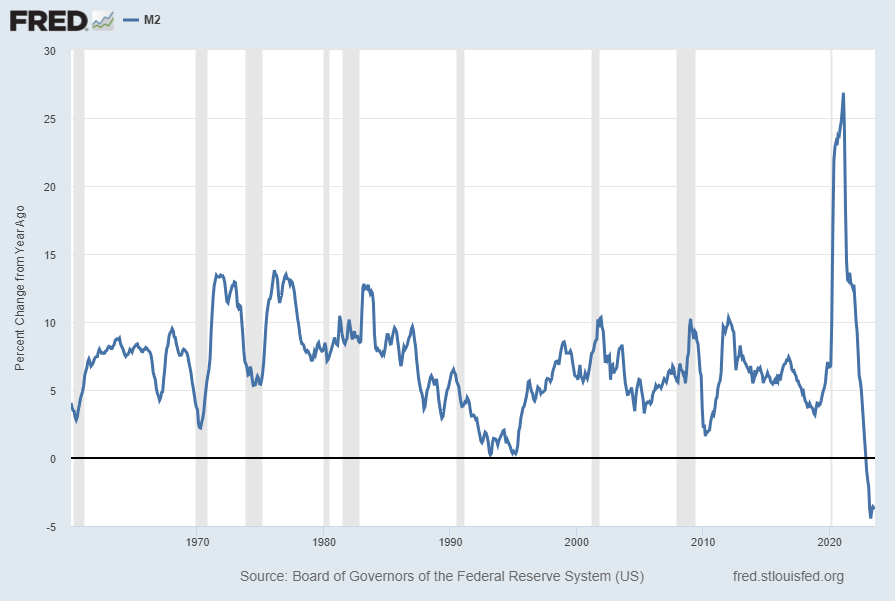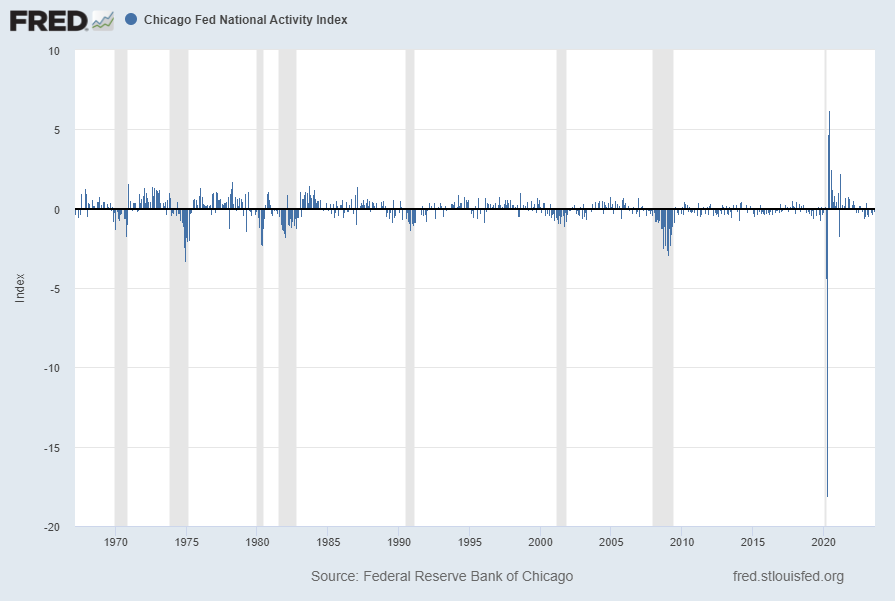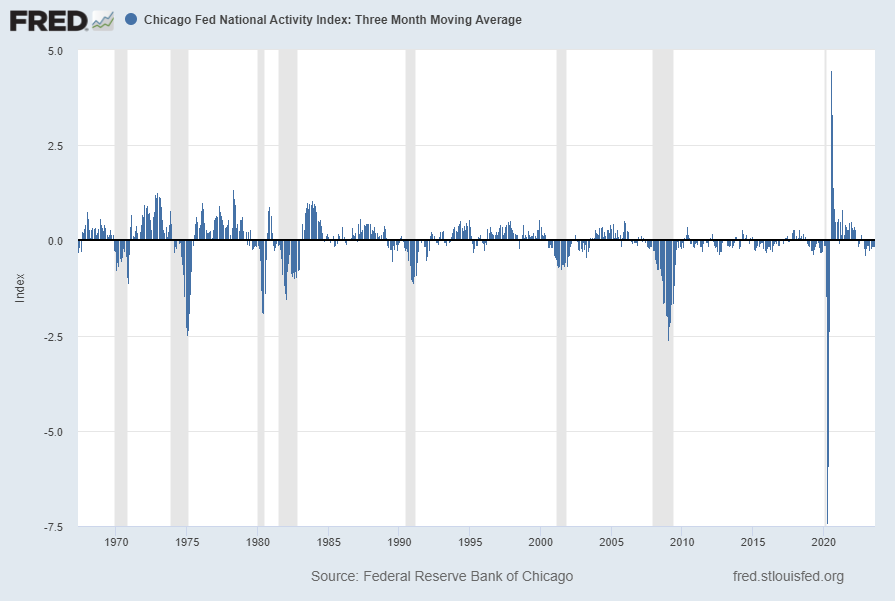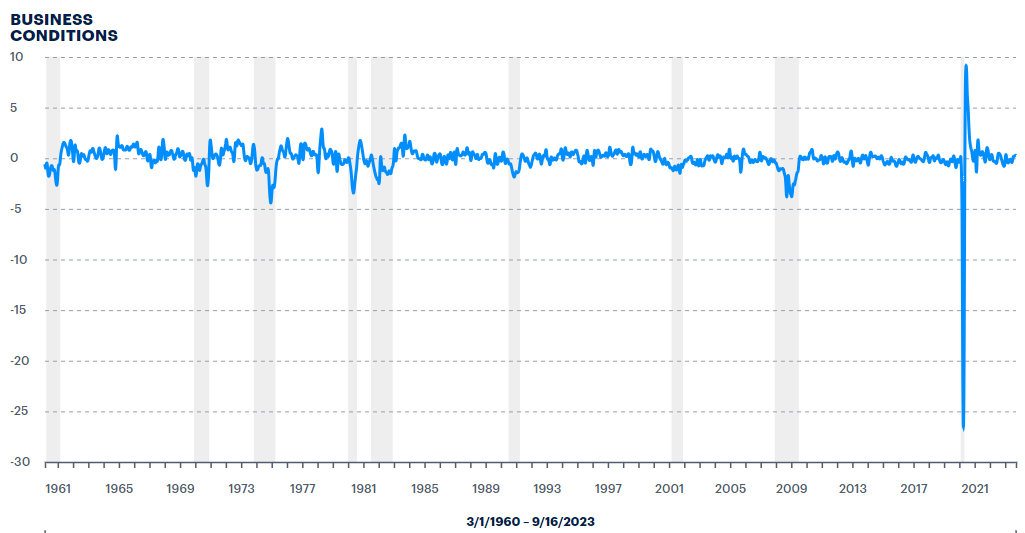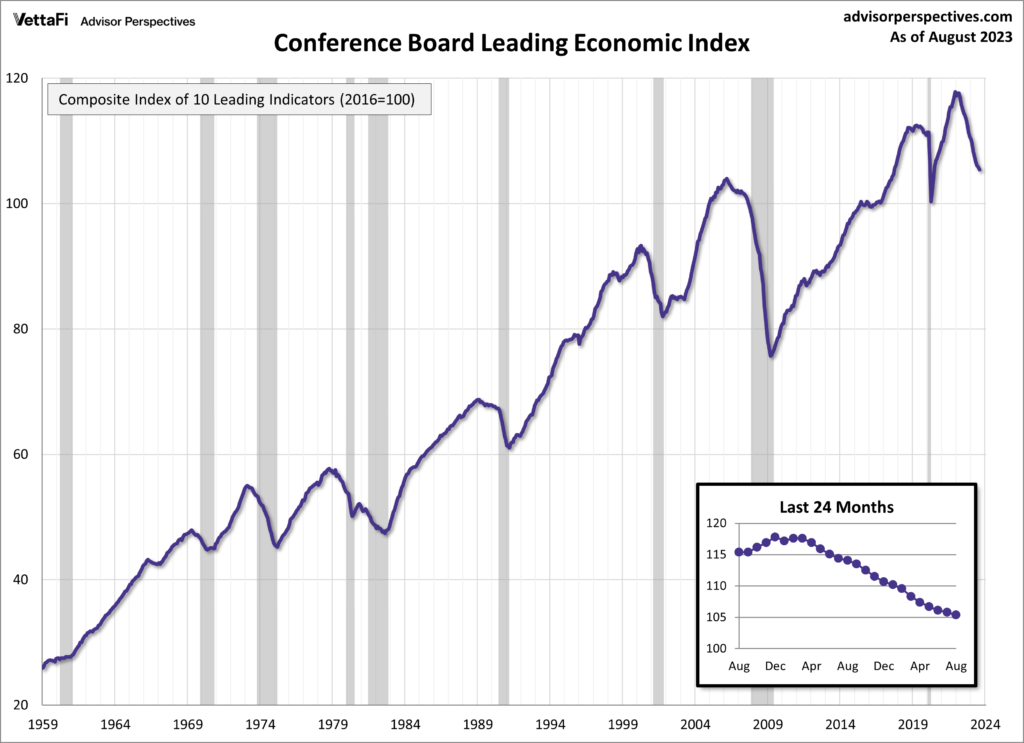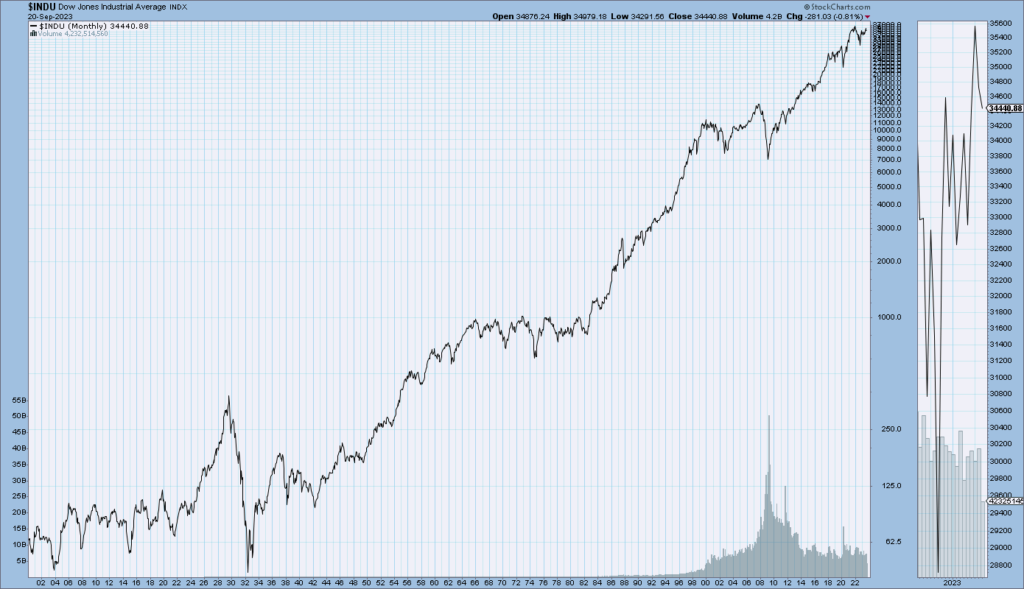On Wednesday, September 20, 2023 FOMC Chairman Jerome Powell gave his scheduled September 2023 FOMC Press Conference. (link of video and related materials)
Below are Jerome Powell’s comments I found most notable – although I don’t necessarily agree with them – in the order they appear in the transcript. These comments are excerpted from the “Transcript of Chairman Powell’s Press Conference“ (preliminary)(pdf) of September 20, 2023, with the accompanying “FOMC Statement” and “Summary of Economic Projections” (pdf) dated September 20, 2023.
Excerpts from Chairman Powell’s opening comments:
Since early last year, the FOMC has significantly tightened the stance of monetary policy. We have raised our policy interest rate by 5-1/4 percentage points and have continued to reduce our securities holdings at a brisk pace. We have covered a lot of ground, and the full effects of our tightening have yet to be felt. Today we decided to leave our policy interest rate unchanged and to continue to reduce our securities holdings. Looking ahead, we are in a position to proceed carefully in determining the extent of additional policy firming that may be appropriate. Our decisions will be based on our ongoing assessments of the incoming data and the evolving outlook and risks. I will have more to say about monetary policy after briefly reviewing economic developments.
also:
As I noted earlier, since early last year, we have raised our policy rate by 5-1/4 percentage points. We see the current stance of monetary policy as restrictive, putting downward pressure on economic activity, hiring, and inflation. In addition, the economy is facing headwinds from tighter credit conditions for households and businesses. In light of how far we have come in tightening policy, the Committee decided at today’s meeting to maintain the target range for the federal funds rate at 5-1/4 to 5-1/2 percent and to continue the process of significantly reducing our securities holdings.
Excerpts of Jerome Powell’s responses as indicated to various questions:
COLBY SMITH. Thank you. Colby Smith with the Financial Times. What makes the Committee inclined to think that the fed funds rate at this level is not yet sufficiently restrictive, especially when officials are forecasting a slightly more benign inflation outlook for this year? There’s noted uncertainty about policy lags. Headwinds have emerged from the looming government shutdown, the end of federal childcare funding, resumption of student debt payments, things of that nature.
CHAIR POWELL. So I guess I would characterize the situation a little bit differently. So we decided to maintain the target range for the federal funds rate where it is, at 5.25 percent to 5.5 percent, while continuing to reduce our securities holdings. And we say we’re committed to achieving and sustaining a stance of monetary policy that’s sufficiently restrictive to bring down inflation to 2 percent over time. We said that. But the fact that we decided to maintain the policy rate at this meeting doesn’t mean that we’ve decided that we have or have not at this time reached that stance of monetary policy that we’re seeking. If you look at the SEP, as you obviously will have done, you will see that the majority of participants believe that it is more likely than not that it will be appropriate for us to raise rates one more time in the two remaining meetings this year. Others believe that we have already reached that. So it’s something where we’re not making a decision about that question by deciding to just maintain the rate and await further data.
COLBY SMITH. So right now it’s still an open question about sufficiently restrictive. You’re not saying today that we’ve reached this level?
CHAIR POWELL. No. Clearly what we decided to do is maintain the policy rate and await further data. We want to see convincing evidence, really, that we have reached the appropriate level, and we’re seeing progress, and we welcome that. But we need to see more progress before we’ll be willing to reach that conclusion.
COLBY SMITH. And just on the 2024 projections, what’s behind that shallower path for interest rate cuts and the need for real rates to be 50 basis points higher?
CHAIR POWELL. Right. So, I would say it this way. First of all, real interest rates are positive now. They’re meaningfully positive. And that’s a good thing. We need policy to be restrictive so that we can get inflation down to target. Okay. And we’re going to need that to remain to be the case for some time. So I think, you know, remember that, of course, the SEP is not a plan that is negotiated or discussed, really, as a plan. It’s accumulation, really, and what you see are the medians. It’s accumulation of individual forecasts from 19 people, and then what you’re seeing are the medians. So I wouldn’t want to bestow upon it the idea that it’s really a plan. But what it reflects, though, is that economic activity has been stronger than we expected, stronger than I think everyone expected. And so what you’re seeing is this is what people believe, as of now, will be appropriate to achieve what we’re looking to achieve, which is progress toward our inflation goal, as you see in the SEP.
also:
STEVE LIESMAN. Steve Leisman, CNBC. Mr. Chairman, I want to return to Colby’s question here. What is it saying about the Committee’s view of the inflation dynamic in the economy that you achieve the same forecast inflation rate for next year but need another half a point of the funds rate on it? Does it tell us that the Committee believes inflation to be more persistent, requires more medicine effectively? And I guess a related question is if you’re going to project a funds rate above the longer-run rate for four years in a row, at what point do we start to think, hey, maybe the longer rate or the neutral rate is actually higher? Thank you.
CHAIR POWELL. So I guess I would point more to — rather than pointing to a sense of inflation having become more persistent, we’ve seen inflation be more persistent over the course of the past year, but I wouldn’t say that’s something that’s appeared in the recent data. It’s more about stronger economic activity, I would say. So if I had to attribute one thing, again, we’re picking medians here and trying to attribute one explanation, but I think broadly stronger economic activity means we have to do more with rates, and that’s what that meaning is telling you. In terms of what the neutral rate can be, you know, we know it by its works. We only know it by its works, really. We can’t – we can’t – the models that we use, ultimately you only know when you get there and by the way the economy reacts, and, again, that’s another reason why we’re moving carefully now because, you know, there are lags here. So it may, of course, be that the neutral rate has risen. You do see people, you don’t see the median moving, but you do see people raising their estimates of the neutral rate, and it’s certainly plausible that the neutral rate is higher than the longer-run rate. Remember, what we write down in the SEP is the longer-run rate. It is certainly possible that, you know, that the neutral rate at this moment is higher than that and that that’s part of the explanation for why the economy has been more resilient than expected.
also:
CHRIS RUGABER. Hi. Thank you. Chris Rugaber, Associated Press. When you look at the disinflation that has taken place so far, do you see it mostly as a result of what some economists are calling the low-hanging fruit, such as the unwinding of supply chain snarls and other pandemic disruptions, or is it more of a broad disinflationary trend that involves most goods and services across the economy? Thank you.
CHAIR POWELL. If I understood your question, I would say it this way. I think we knew from the time, from before when we lifted off, but certainly by the time we lifted, we knew that bringing inflation back down was going to take, as I call it, the unwinding of these distortions to both supply and demand that happened because of the pandemic and the response. So that unwinding was going to be important. In addition, monetary policy was going to help. It was going to help supply side heal by cooling demand off and just, in general, better aligning supply with demand. So those two forces were always going to be important. I think it’s very hard to pull them apart. They work together. I do think both of them are at work now, and I think they’re at work in a way that shows you the progress that we are seeing.
_____
_____
The Special Note summarizes my overall thoughts about our economic situation
SPX at 4355.76 as this post is written
